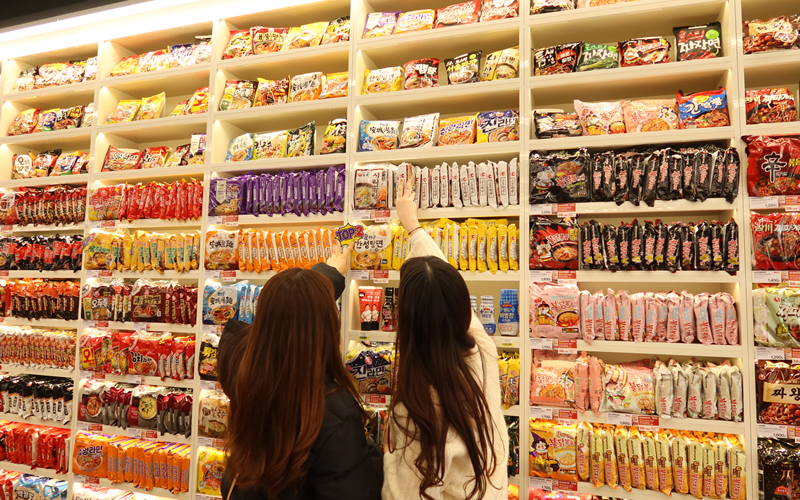
The Ministry of Agriculture, Food and Rural Affairs on July 3 said exports of K-Food Plus items in the first half of the year reached USD 6.21 billion, up 5.2% from the same period last year. Shown are foreign tourists selecting ramyeon (instant noodles) at Ramyun Library, a store at the Hongdae Sangsang branch of the convenience store chain CU in Seoul’s Mapo-gu District. (Korea.net DB)
By Wu Jinhua
K-Food Plus, a term referring to agricultural products and items from upstream and downstream industries, broke the USD 6 billion mark in exports for the first time in the first half of this year thanks to high demand for such items.
The Ministry of Agriculture, Food and Rural Affairs on July 3 said K-Food Plus exports from January through last month rose 5.2% year on year to USD 6.21 billion.
K-Food (agricultural products) exports hit USD 4.77 billion, up 6.7%, and those of upstream and downstream industries USD 1.44 billion, up 0.6%.
K-Food Plus includes agricultural products (K-Food) and items from upstream and downstream industries like smart farms, agricultural equipment, pet food and veterinary medicine.
“Consumer spending in the U.S. has remained solid due to stability of the labor market and easing of inflation, leading to high export growth,” the ministry said. “Consumer sentiment in China has slowly recovered, returning to growth from May.”
By region, it added, Europe, Central and South America, the Middle East and Oceania all showed overall growth of over 10% from the same period last year.
The leading export was ramyeon (instant noodles), whose overseas shipments in the first half rose 32.3% to USD 590 million.
First-half exports to China and the U.S., the two largest markets for the noodles, surpassed USD 100 million late last month in each country thanks to expansion into online sales channels and advances to hypermarkets. Those to Europe steadily rose to also break the USD 100 million mark for the first time in the period.
Processed rice products showed the highest export increase year on year. Overseas shipments of such foods including frozen gimbap (seaweed rice rolls), fried rice, tteokbokki (spicy rice cake), rice drinks and makgeolli (milky rice wine) in the first six months reached USD 137 million, a 41.4% jump.
Such foods led by frozen gimbap are growingly popular as healthy and convenient food, with more branches of U.S. hypermarkets such as Costco carrying the items and their exports continuing to grow.
Deputy Minister of Agriculture, Food and Rural Affairs Kwon Jae-han, who heads the ministry’s Agricultural Innovation Policy Office, said, “To maximize results in the second half of the year, we will actively support export company activities by resolving their difficulties, support their participation in exhibitions, pioneer new markets such as identifying influential foreign buyers and expand inter-ministerial cooperation.”
jane0614@korea.kr























